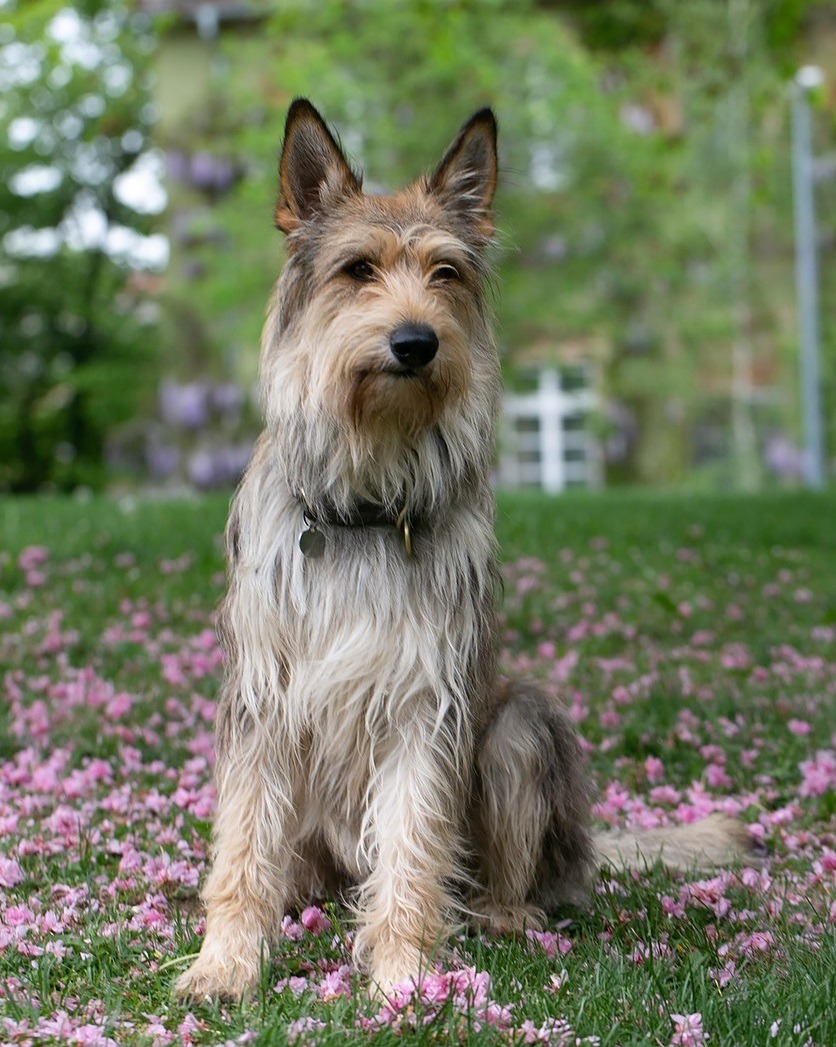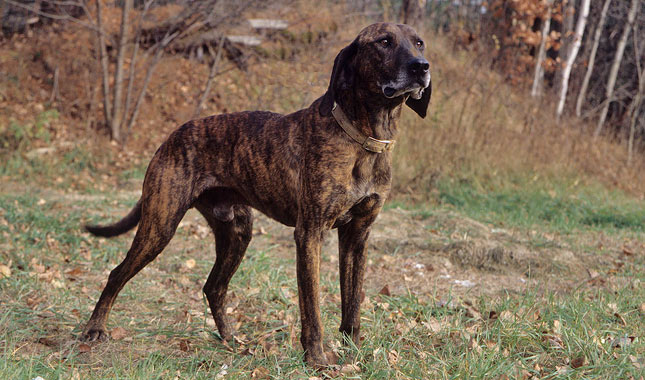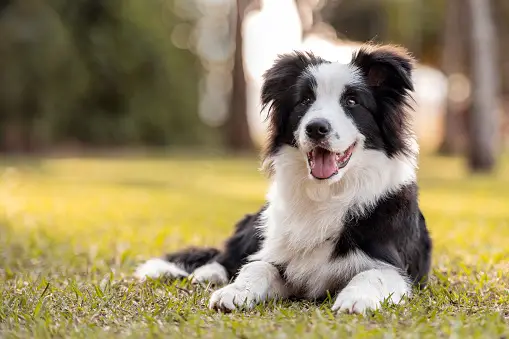Berger Picard are loyal and energetic herding dog. Originating from France, this breed has a rich history of working closely with farmers to herd livestock. With their charming looks and intelligent nature, Berger Picards make wonderful companions and are highly regarded for their loyalty and dedication. In this article, we will explore the characteristics, temperament, and training requirements of the Berger Picard, as well as provide useful tips for potential owners. Whether you are considering adding a herding dog to your family or simply interested in learning more about this fascinating breed, read on to discover everything you need to know about the Berger Picard.
History of the Berger Picard
Origins of the Berger Picard
The Berger Picard, also known as the Picardy Shepherd, is an ancient breed that originated in France. Its exact origins are not well-documented, but it is believed to have been around for several centuries. The breed is thought to have descended from the herding dogs of the Celts.
Recognition as a Breed
Despite its long history, the Berger Picard faced a decline in numbers during the early 20th century. However, thanks to the efforts of dedicated breed enthusiasts, the Berger Picard was saved from extinction. In 1925, the first breed standard for the Berger Picard was established by the Club des Amis du Berger de Picardie.
The Berger Picard’s recognition as a breed by various kennel clubs followed soon after. In 1934, the Société Centrale Canine (French Kennel Club) officially recognized the breed. The Berger Picard was also recognized by the Fédération Cynologique Internationale (FCI) in 1955, granting it international recognition.
Today, the Berger Picard continues to gain popularity worldwide. Its unique appearance, loyal nature, and energetic temperament make it a beloved choice for both working and companion dog enthusiasts.
Characteristics and Temperament
The Berger Picard is a breed known for its exceptional characteristics and temperament. This herding dog is highly regarded for its loyalty and energy, making it an excellent choice for those in need of a working companion. Let’s explore some key aspects of the Berger Picard’s characteristics and temperament.
Physical Appearance
The Berger Picard showcases a unique and distinct physical appearance that sets it apart from other herding dogs. This medium-sized breed boasts a muscular build with a well-defined bone structure. Its most notable feature is its shaggy coat, which is rough and tousled, giving it a rugged appearance. The coat comes in a variety of colors, including fawn, brindle, and gray. With its upright ears and expressive eyes, the Berger Picard’s physical appearance exudes a sense of intelligence and alertness.
Intelligence and Trainability
The Berger Picard is renowned for its high intelligence and trainability. This breed possesses a quick wit and an eagerness to please its owner, making it highly responsive to training. With proper guidance and positive reinforcement techniques, the Berger Picard can quickly grasp commands and excel in various training activities. Its intelligence combined with its natural herding instincts allows it to adapt to different tasks and excel in obedience training, agility, and even advanced tricks.
Energy Level and Exercise Needs
As a herding dog, the Berger Picard has a naturally high energy level and requires regular exercise to maintain its physical and mental well-being. This breed thrives in an active environment where it can engage in stimulating activities. Daily exercise routines such as brisk walks, jogs, or playtime in a securely fenced area are essential for preventing boredom and potential behavioral issues. Providing mental stimulation through interactive toys and puzzle games is also beneficial for this breed. With sufficient exercise and mental challenges, the Berger Picard will be a content and well-rounded companion.
In conclusion, the Berger Picard possesses remarkable characteristics and temperament that make it an exceptional herding dog. Its unique physical appearance, high intelligence, and trainability, coupled with its energetic nature and exercise needs, make it a loyal and energetic companion for those who appreciate an active and intelligent breed.
Care and Grooming
Coat and Grooming Requirements
The Berger Picard, also known as the Picardy Shepherd, has a unique coat that requires regular grooming to keep it in top condition. This breed has a thick double coat that helps protect them from various weather conditions. The outer coat is rough and wiry, while the undercoat is dense and soft.
To maintain their coat, regular brushing is essential. Using a slicker brush or a comb with wide teeth, you can remove any loose hair and prevent matting. Pay extra attention to areas such as the neck, behind the ears, and the tail, as these tend to accumulate more tangles.
Bathing should be done as needed, typically every two to three months, or when the dog gets particularly dirty. Use a mild dog shampoo and ensure thorough rinsing to prevent any residual soap from irritating the skin.
Trimming the nails regularly is crucial for the Berger Picard’s overall health and comfort. Long nails can cause discomfort and affect the dog’s gait. Additionally, regular teeth brushing and ear cleaning should be part of their grooming routine to prevent dental issues and ear infections.
Health Considerations
Like any other breed, the Berger Picard is prone to certain health conditions. While generally a healthy breed, it’s important to be aware of potential issues to provide proper care and early intervention if needed.
One common health concern in Berger Picards is hip dysplasia, a condition where the hip joint doesn’t form correctly, leading to pain and mobility issues. Regular exercise and maintaining a healthy weight can help reduce the risk of hip dysplasia. Additionally, regular check-ups with a veterinarian can help monitor the dog’s joint health.
Another condition that can affect Berger Picards is progressive retinal atrophy (PRA), a degenerative eye disease that can lead to blindness. Regular eye examinations by a veterinary ophthalmologist can help detect any early signs of PRA, allowing for appropriate management.
Lastly, it’s important to keep up with vaccinations and preventive treatments for parasites such as fleas, ticks, and heartworms. Regular visits to the vet for vaccinations and check-ups are crucial for maintaining the overall health and well-being of your Berger Picard.
Nutrition and Exercise
Providing a balanced diet is essential for keeping your Berger Picard healthy and energetic. High-quality dog food that meets their nutritional needs should be the foundation of their diet. Consult with your veterinarian to determine the appropriate portion sizes and feeding schedule based on your dog’s age, weight, and activity level.
Berger Picards are an energetic and active breed that requires regular exercise to keep them happy and fit. Daily walks, playtime, and mental stimulation through training or interactive toys are necessary to prevent boredom and promote their overall well-being. Engaging them in activities such as agility or herding trials can provide both physical and mental stimulation, allowing them to thrive.
Remember to always provide fresh water and monitor your dog’s weight to prevent obesity, which can lead to various health problems. Regular exercise, a balanced diet, and proper hydration will contribute to your Berger Picard’s long and healthy life.
Training and Socialization
Basic Training Commands
Training a Berger Picard requires consistency, patience, and positive reinforcement. These intelligent dogs quickly pick up on commands and enjoy pleasing their owners. Here are some basic training commands that are essential for a well-behaved Berger Picard:
- Sit: Teach your Berger Picard to sit by holding a treat above their head and slowly moving it towards their back. As their head follows the treat, their bottom will naturally lower into a sitting position. Reward them with the treat and praise when they successfully sit.
- Stay: Start by commanding your Berger Picard to sit, then extend your hand towards them with your palm facing out and firmly say, “Stay.” Take a step back and reward them if they remain in the sitting position. Gradually increase the distance and duration of the stay command.
- Lie Down: Begin with your Berger Picard in a sitting position. Hold a treat in front of their nose and slowly lower it towards the ground. As they follow the treat, their body will naturally lower into a lying down position. Reward them with the treat and praise when they successfully lie down.
- Come: This command is crucial for your Berger Picard’s safety. Start by kneeling down and calling their name in an enthusiastic tone. Open your arms wide and encourage them to come towards you. When they reach you, reward them with praise, treats, or both.
Socializing with Other Animals
Berger Picards are generally friendly and sociable dogs, but proper socialization is necessary to ensure they behave appropriately around other animals. Here are some tips for socializing your Berger Picard with other animals:
- Early Exposure: Introduce your Berger Picard to other animals, such as dogs, cats, and small animals, from a young age. This will help them become familiar with different species and develop positive associations.
- Supervised Interactions: When introducing your Berger Picard to other animals, always supervise their interactions. This allows you to intervene if any signs of aggression or discomfort arise. Gradually increase the duration and frequency of these interactions as your dog becomes more comfortable.
- Positive Reinforcement: Reward your Berger Picard with treats and praise when they exhibit calm and friendly behavior towards other animals. This positive reinforcement will reinforce their good behavior and encourage them to continue behaving well.
- Gradual Exposure: If your Berger Picard shows signs of fear or aggression towards certain animals, take a gradual approach to exposure. Start by keeping a safe distance and gradually decrease it over time, ensuring your dog remains calm and relaxed. Seek the guidance of a professional dog trainer if needed.
Behavioral Challenges and Solutions
Like any dog breed, Berger Picards may face certain behavioral challenges. Here are some common challenges and solutions for a harmonious relationship with your Berger Picard:
- Separation Anxiety: Berger Picards are known to form strong bonds with their owners, which can lead to separation anxiety when left alone. To address this, gradually increase the time spent apart, provide them with interactive toys, and consider crate training to create a safe space for them.
- Excessive Barking: Berger Picards are alert and protective, which can result in excessive barking. To curb this behavior, teach them the “quiet” command by rewarding them when they stop barking on command. Engage them in regular exercise and mental stimulation to reduce their overall anxiety levels.
- Herding Instincts: As herding dogs, Berger Picards have a natural instinct to herd and may try to nip at the heels of children, other pets, or even strangers. Redirect this behavior by providing them with appropriate outlets for their herding instincts, such as participating in dog sports or providing them with puzzle toys to keep their minds occupied.
Remember, consistency, positive reinforcement, and patience are key when training and socializing your Berger Picard. With proper training and socialization, your loyal and energetic Berger Picard will thrive as a well-rounded companion.
The Berger Picard is a remarkable breed that combines loyalty, intelligence, and boundless energy. As a herding dog, it excels in its natural ability to control and guide livestock. Its strong work ethic and unwavering devotion to its family make it an exceptional companion and guardian. With proper training and socialization, the Berger Picard can thrive in various environments and fulfill its potential as a versatile working dog. Whether on the farm or in a loving home, this breed’s unique characteristics make it a cherished and valued member of any family.







